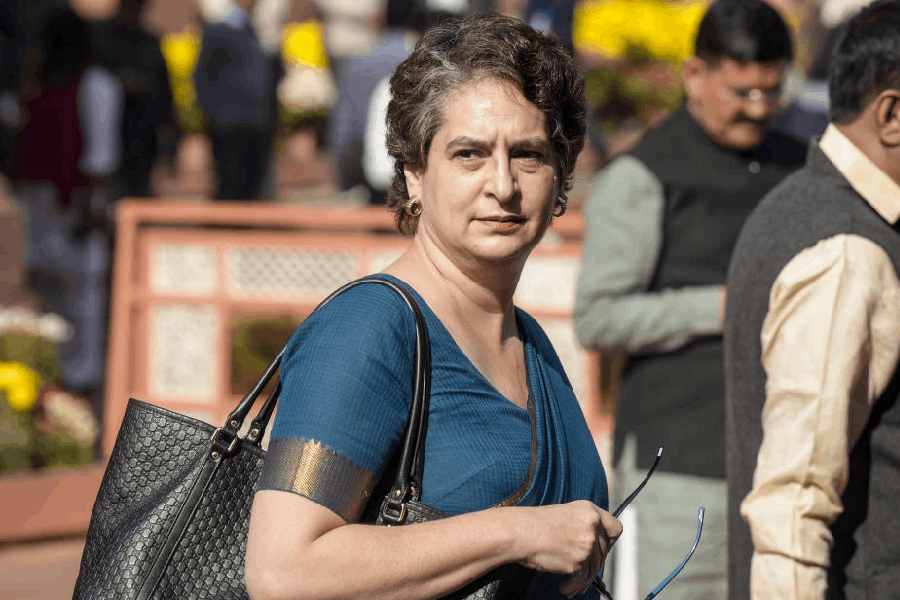|
|
The universities cannot continue to be viable if they are set contradictory objectives. In the typical case, the Indian university is expected to produce hundreds of thousands of graduates every year, and these numbers keep rising. But it is also expected to maintain and even advance standards of teaching and research in all significant branches of learning. Those who advise the government know that these two objectives cannot be met simultaneously by the same institution or the same kind of institution, but their desire to be of service to the nation leads them to hope that they will somehow be able to square the circle.
In most cases, an institution finds it hard to free itself from its own history. The first universities that came into being in 1857 in Calcutta, Bombay and Madras were set up primarily for conducting examinations and awarding degrees, and not for undertaking research or even teaching. Research was done in institutions outside the universities, such as the Asiatic Society or the Indian Association for the Cultivation of Science, and teaching was done mainly in the colleges. At their foundation, our universities were not designed to be communities of scientists and scholars and they knew little of the unity of teaching and research, unlike the great universities that were being created or revived in the Western countries throughout the 19th century.
It will be folly to believe that the British who set up the first universities in India intended them to be communities of scientists and scholars of the kind that had grown over a long period of time in the West. Few among them believed that universities such as those at Cambridge and Oxford could grow in the Indian environment. They intended the Indian universities to serve the more limited purpose of producing graduates for employment in the new occupations that came up in the wake of colonial rule.
Yet it would be wrong to say that the universities and colleges brought nothing new into the life of the nation. They were among the first open and secular institutions, and their graduates were the ones who took the lead in creating and sustaining the institutions of a new kind of civil society. They also played an important part in the transmission, if not the creation, of modern knowledge with its distinctive ideas, beliefs and values. Moreover, by the beginning of the 20th century, some islands of excellence had emerged at Calcutta, Allahabad and a few other universities where scientists and scholars of outstanding ability were making significant contributions to knowledge. But under colonial rule, the universities did mainly what they were set up to do, that is, produce increasing numbers of graduates of indifferent quality.
The coming of Independence brought about a change in the horizon of possibilities. The colonial administration was at best half-hearted in its support of the universities. The academic profession in the country expected much more from the leaders of independent India than from their colonial predecessors. At first things seemed to augur well for the universities. The first prime minister of independent India, Jawaharlal Nehru, placed a high value on science and scholarship and took a personal interest in the universities. He himself had never studied in an Indian university but had been a student at Cambridge, one of the great universities of the world.
The government wasted no time in setting up a University Education Commission in 1948. It was headed by Sarvepalli Radhakrishnan, who had been a professor at both Calcutta and Oxford. A more broad-based Education Commission, designed to cover all levels of education, was set up less than 20 years later under D.S. Kothari, then a professor of physics in Delhi, who had earlier studied under R.G. Fowler at Cambridge.
Those who provided the leadership for the development of the universities in the early years of Independence were persons of wide experience and outstanding ability. They were untiring in their efforts to build institutions that would compare with the best in the world. But in the end, their efforts did not bear the fruits that they had hoped for. Despite the best efforts of the leaders of the community of scientists and scholars, the universities have failed to free themselves from their older legacy of having to produce more and more graduates.
With increasing financial and other support from the government, the universities began to expand in number as well as size. There are now many more universities than there were at the time of Independence, and they are, on an average, much larger in size. Thirty years after Independence it was becoming increasingly clear that the expansion of higher education was being driven more by social and political pressures than by pressures of the advancement of knowledge. The social and political pressures for the admission of more students and the production of more graduates began to undermine the very ideals of the university that inspired the leaders of the academic profession at the time of Independence.
The mass universities that have come to dominate the Indian scene are very different from the universities that Radhakrishnan, Kothari, V.K.R.V. Rao and others had known in the West and had hoped to build in India after Independence. The traditional type of university now accommodates many more faculties and departments than universities anywhere in the world did until World War II. What we must ask today is whether the universities can fruitfully combine teaching and research if they have to accommodate all recognized branches of study from physics to philosophy while including film studies, gender studies, peace studies and an ever-growing array of new subjects that seek accommodation within each one of them.
Perhaps the all-purpose university of the 19th and early 20th centuries has outlived its utility in the 21st century. If the university is to be viable as a centre of advanced study and research, it may have to limit the ambition that it earlier had of covering all branches of existing knowledge. At the same time, a university will scarcely deserve to be called one if it confines itself to a single subject. There is really no good reason to swing from the extremes of inclusion to the extremes of exclusion. A university can serve as an effective institution of teaching and research if it limits itself to a cluster of related subjects, and restrains its ambition for indefinite expansion.
It appears to me that we can still create universities that will be communities of learning, combining teaching and research, provided they are able to limit their scale and scope. Such universities will of course have to conduct examinations and award degrees, but the conduct of examinations and the awarding of degrees need not become their sole or even their main concern as inevitably happens in the mass universities.












